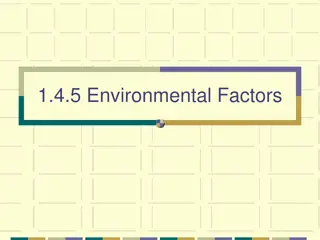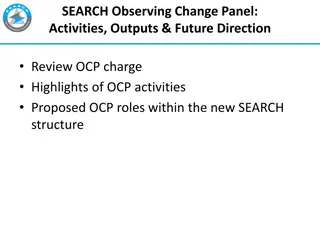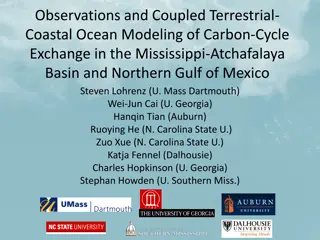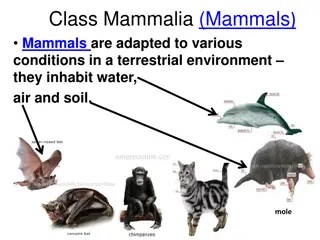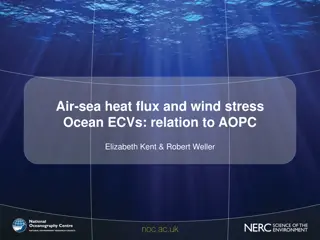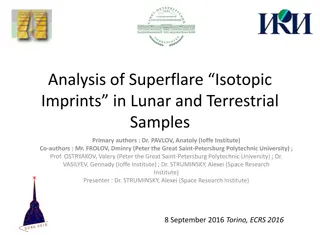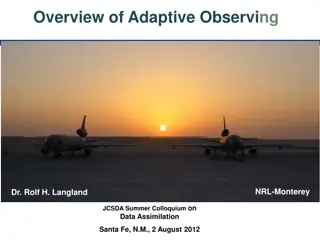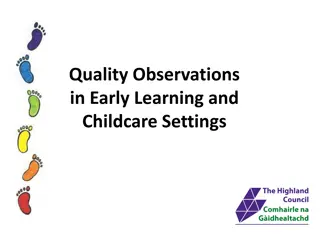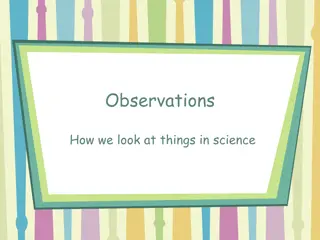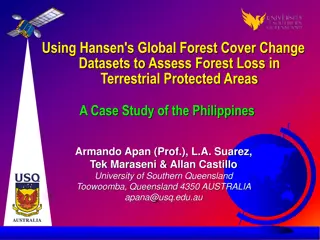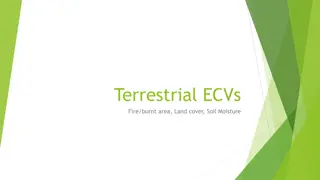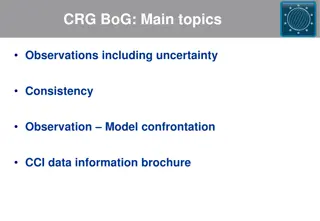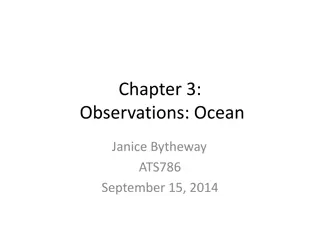The Global Observing System for Climate and Terrestrial Climate Observations
The Global Observing System for Climate (GCOS) plays a crucial role in observing climate-related variables globally. Established in April 1992, GCOS focuses on what, how, and where to measure, sustain measurement, manage change, data transmission, management, rescue, and access. It addresses concerns such as network deterioration, satellite data quality, and evolving data requirements. Additionally, the IPCC's First Assessment Report in 1990 emphasized the need for improved systematic observation of climate-related variables for better predictability of climate change.
Download Presentation

Please find below an Image/Link to download the presentation.
The content on the website is provided AS IS for your information and personal use only. It may not be sold, licensed, or shared on other websites without obtaining consent from the author. Download presentation by click this link. If you encounter any issues during the download, it is possible that the publisher has removed the file from their server.
E N D
Presentation Transcript
The Global Observing System for Climate GCOS A workshop on Terrestrial Climate Observations and human livelihoods 21 March 2018 GCOS Secretariat, WMO Carolin Richter, Director
IPCC First Assessment Report 1990 IPCC First Assessment Report (1990) IPCC concluded that improved predictability of (human induced) climate change would require improved systematic observation of climate related variables on a global basis
GCOS established April 1992
GCOS is concerned with the observations what is measured, how it is measured, where it is measured, how measurement is sustained, how change is managed data transmission what is transmitted, with what time delay, in what code data management, including data rescue archiving and access to raw data, metadata, processed data records and products recovery and rehabilitation of past data Locations of 36064 surface weather observations received by ECMWF 09-15UTC 12 June 2012 data records and products fundamental records, including recalibration and homogenisation satellite retrievals, gridded fields from in situ and remotely- sensed measurements, comprehensive reanalyses of multiple observational datasets based on weather- prediction systems
Some continuing concerns, including Status Report, 2015 deterioration of some in situ networks; lack of progress in filling gaps in others limited provision for limb sounding and reference measurement from space but many improvements (that need sustaining) including quantity and quality of data from several in situ sources, including radiosondes quantity, quality and variety of data from satellites Source:Status Report 2015, A. Simmons recovery and reprocessing of past data, both in situ and remotely sensed reanalysis, with coupling of atmosphere to ocean and land, and inclusion of chemistry conventional analysis of instrumental records converging temperature information from various observational and model datasets and evolving requirements e.g. for global, ground-based, soil-moisture data to complement remote sensing and reanalysis
TOPC has to watch over 19/54 ECVs
HYDROLOGICAL ECVS LAKES RIVER DISCHARGE GROUNDWATER EVAPORATION FROM LAND SOIL MOISTURE
CRYOSPHERE ECVS SNOW GLACIERS ICE SHEETS PERMAFROST
BIOSPHERE ECVS LAI ALBEDO FAPAR LAND-SURFACE TEMPERATURE LAND COVER
BIOSPHERE ECVS ABOVE- GROUND BIOMASS SOIL CARBON FIRE
HUMAN DIMENSION ECVS ANTHROPOGENIC WATER USE ANTHROPOGENIC GHG FLUXES
ECV SOIL MOISTURE PRODUCTS PHYSICAL QUANTITIES Volumetric Soil Moisture m3/m3 Freeze / Thaw - % Surface Inundation - % Root-zone soil moisture m3/m3
Concept of ECVs published 2014 https://doi.org/10.1175/BAMS-D-13-00047.1 Published Online: 30 October 2014
http://climatemonitoring.info/ ecvinventory 30 ECVs / 37 available from satellites
Global Climate Indicators Atmospheric Composition Temperature and Energy Cryosphere Ocean and Water Headline Indicators Surface Temperature Glacier Mass Balance Ocean Acidification Atmospheric CO2 Arctic and Antarctic Sea Ice Extent Ocean Heat Sea Level
Adapting to a changing climate what observations are needed ? Virtually all observations support adaptation. We must model what we cannot measure (or predict with global systems). Adrian Simmons, Workshop on Observations for Adaptation, DWD, Offenbach, Feb 2013 Presentation: The Global Climate Observing System: Observations and products from global to local
GCOS/WCRP Terrestrial Observation Panel for Climate (TOPC) gcos.wmo.int @gcos_un


![[PDF⚡READ❤ONLINE] Solar Surveyors: Observing the Sun from Space (Springer Praxis](/thumb/21536/pdf-read-online-solar-surveyors-observing-the-sun-from-space-springer-praxis.jpg)





